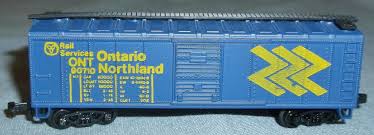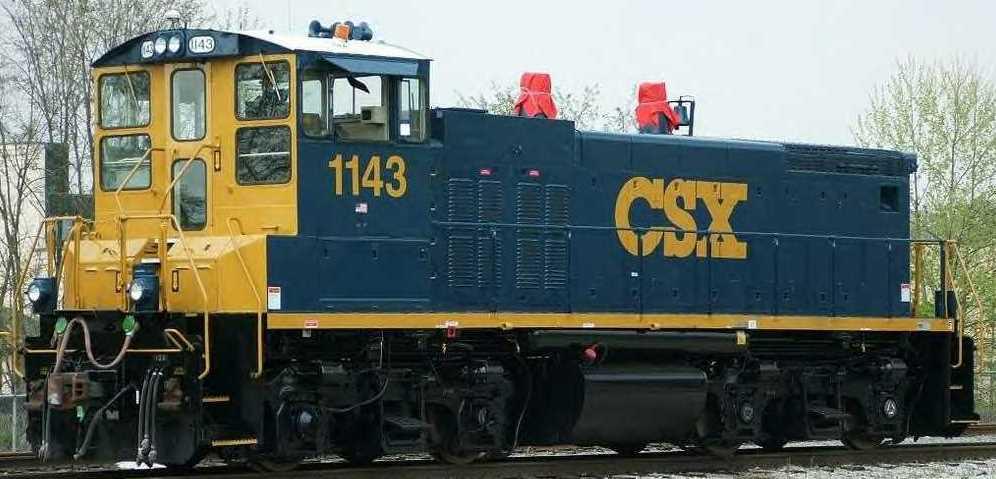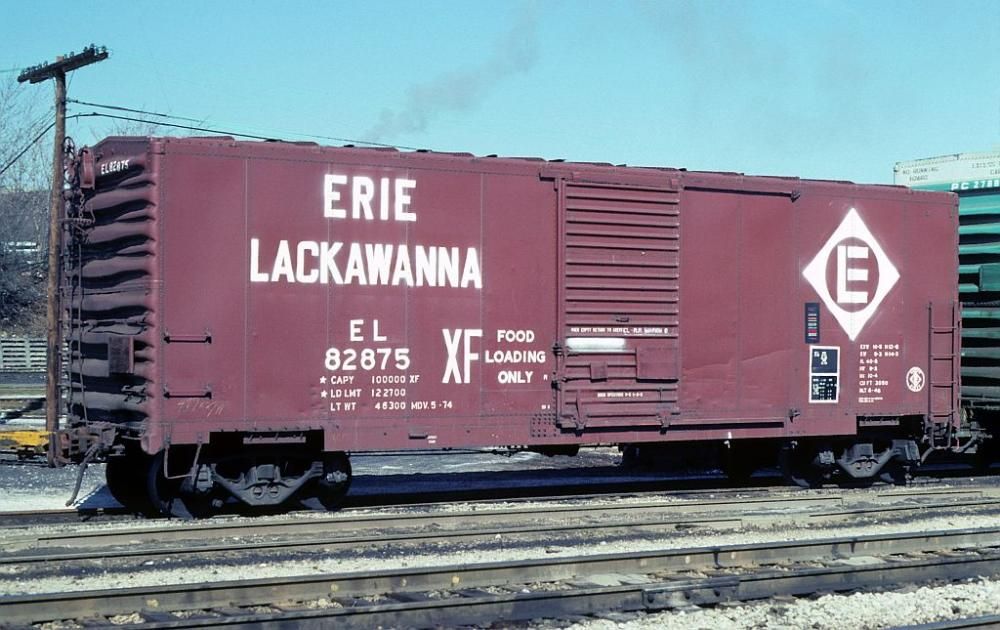Model Information: Mehano first produced this car for MRC. It is a direct knock-off of the Rivarossi-made steel boxcar, inspired from the PRR X-29 prototype. It purportedly designed by Atlas to replace the Rivarossi model (labor costs in Italy?), but Atlas never actually ordered any to be made once the design was completed by Mehano. I am not confident this is true as the oldest versions of this car that I have seen are stamped 'MRC Yugoslavia' which implies the mold was designed for MRC and not Atlas. It was later imported by Life-Like, Model Power and AHM. It carries nickel-silver plated wheels and Rapido couplers. It is a typical 1st gen rolling stock model with low-quality pad printing (at least for the older models) and a simple mold.
Model Power later re-ran their Mehano-made models in China, using the same roadnames and numbers and the same stock number. The main differences between the Mehano and the Chinese molds can be observed on the door and the sill of the underframe; the Mehano is also slightly lower in height. The best way to distinguish them remains however the marking on the under-frame (Yugoslavia or Hong-Kong)
Model Power later re-ran their Mehano-made models in China, using the same roadnames and numbers and the same stock number. The main differences between the Mehano and the Chinese molds can be observed on the door and the sill of the underframe; the Mehano is also slightly lower in height. The best way to distinguish them remains however the marking on the under-frame (Yugoslavia or Hong-Kong)
Prototype History: Steel boxcars became a common site in the post-WWII period (also known as the transition era). Steel construction resulted in a lighter, lower-maintenance car that was less expensive to acquire and operate. The economies of scale that happened during the war along with a cessation of orders from the military resulted in a plentiful, inexpensive source of metal and aluminum for the railcar manufacturers which in turn led a complete replacement of the aging wood-sheathed fleets with new steel cars.
Road Name History: The Ontario Northland Railway (reporting mark ONT) is a Canadian railway operated by the Ontario Northland Transportation Commission, a provincial Crown agency of the government of Ontario.
Its north-south mainline is located entirely in Ontario, and has a southern terminus at North Bay, passing through Cochrane, and a northern terminus at Moosonee, several miles south of the shore of James Bay. An east-west secondary mainline connects Calstock (near Hearst) with Cochrane, and a line extends from Swastika (south of Cochrane) into the neighbouring province of Quebec, where it terminates at Rouyn-Noranda. The railway's branch from Swastika to Rouyn-Noranda, including 40 kilometres of track in Quebec, is operated by a subsidiary, the Nipissing Central Railway. Shorter spur lines also exist running west from Rock Junction to Sherman Mine, south-west from Porquis Junction to Kidd Creek Mine, about 22 km east of Timmins, north-east from Porquis to Iroquois Falls and south from Opaz Junction to Agrium mine site.
Originally built to develop the Lake Timiskaming and Lake Nipissing areas, the railway soon became a major factor in the economic growth of the province. After decades of difficult construction through the Canadian Shield, workers reached James Bay in 1932. While blasting the route through the shield, geologists discovered deposits of valuable minerals such as gold, silver, copper and nickel. The railway also made it possible to exploit the timber resources of Northern Ontario.
Its north-south mainline is located entirely in Ontario, and has a southern terminus at North Bay, passing through Cochrane, and a northern terminus at Moosonee, several miles south of the shore of James Bay. An east-west secondary mainline connects Calstock (near Hearst) with Cochrane, and a line extends from Swastika (south of Cochrane) into the neighbouring province of Quebec, where it terminates at Rouyn-Noranda. The railway's branch from Swastika to Rouyn-Noranda, including 40 kilometres of track in Quebec, is operated by a subsidiary, the Nipissing Central Railway. Shorter spur lines also exist running west from Rock Junction to Sherman Mine, south-west from Porquis Junction to Kidd Creek Mine, about 22 km east of Timmins, north-east from Porquis to Iroquois Falls and south from Opaz Junction to Agrium mine site.
Originally built to develop the Lake Timiskaming and Lake Nipissing areas, the railway soon became a major factor in the economic growth of the province. After decades of difficult construction through the Canadian Shield, workers reached James Bay in 1932. While blasting the route through the shield, geologists discovered deposits of valuable minerals such as gold, silver, copper and nickel. The railway also made it possible to exploit the timber resources of Northern Ontario.
Brand/Importer Information: Founded in the late 1960's by Michael Tager, the 3rd generation business specializes in quality hobby products serving the toy and hobby markets worldwide. During its 50 years of operation, Model Power has developed a full line of model railroading products, die-cast metal aircraft, and die-cast metal cars and trucks.
In early 2014, Model Power ceased its business operations. Its extensive portfolio of intellectual property and physical assets are now exclusively produced, marketed, sold, and distributed by MRC (Model Power, MetalTrain and Mantua) and by Daron (Postage Stamp Airplanes and Airliner Collection).
In early 2014, Model Power ceased its business operations. Its extensive portfolio of intellectual property and physical assets are now exclusively produced, marketed, sold, and distributed by MRC (Model Power, MetalTrain and Mantua) and by Daron (Postage Stamp Airplanes and Airliner Collection).
Manufacturer Information: Mehano is a Slovenian toy manufacturer located in Izola, Slovenija. The company was founded as Mehanotehnika and was producing toys starting in June 1953. They first exhibited at the Nuerenberg Toy Fair in 1959. Mehano produced a number of different locomotives and rolling stock models for the North American market in the 1960s and 1970s. Companies such as Atlas and Life-Like imported a huge variety of their products. Generally they can easily be recognized as they are stamped "Yugosolavia" on the underframe. The company was formally renamed "Mehano" in 1990. Izola today is part of the country of Slovenia since the breakup of Yugoslavia.
Mehano filed for bankruptcy in 2008, but still continued to exist and operate. Since 2012, Mehano products are distributed by Lemke.
Mehano filed for bankruptcy in 2008, but still continued to exist and operate. Since 2012, Mehano products are distributed by Lemke.
Item created by: gdm on 2017-06-30 09:27:01. Last edited by gdm on 2022-11-01 11:05:39
If you see errors or missing data in this entry, please feel free to log in and edit it. Anyone with a Gmail account can log in instantly.
If you see errors or missing data in this entry, please feel free to log in and edit it. Anyone with a Gmail account can log in instantly.












